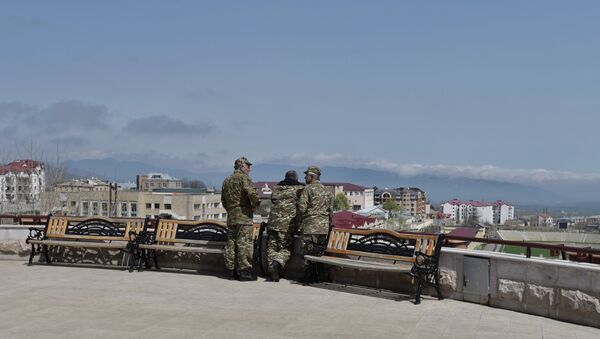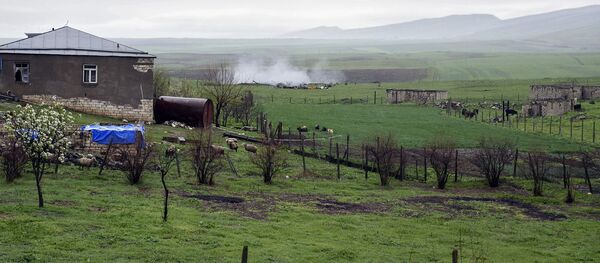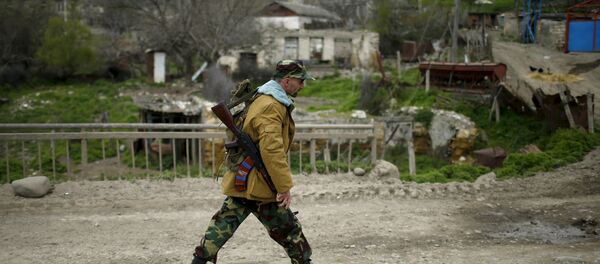BAKU (Sputnik) — Azerbaijan's Armenian-dominated breakaway region of Nagorno-Karabakh proclaimed its independence in 1991. After the military conflict ended in 1994, Azerbaijan lost control over the region.
Violence erupted in Nagorno-Karabakh on April 2, 2016, and led to multiple casualties. The parties to the conflict signed a Russian-brokered ceasefire three days later, but mutual accusations have not stopped so far.
"Tensions have grown in recent years in the zone of military operations where Armenian troops are deployed against the Azerbaijani armed forces," Hasanov said.
He named "the occupation of Azerbaijani lands" as "the single reason" behind the protracted conflict.
"All the rest is a consequence. The occupied territories are not liberated, negotiations are not bringing any results," Hasanov stressed.
On May 16, 2016, Armenian President Serzh Sargsyan and his Azerbaijani counterpart Ilham Aliyev met in Vienna to discuss the conflict. The sides reiterated there can be no military solution to the conflict and reaffirmed their commitment to 1994 and 1995 peace agreements. The presidents also agreed to finalize the OSCE investigative mechanism as soon as possible to reduce the risk of further violence.
On June 20, 2016, the presidents of Armenia, Azerbaijan and Russia met in St. Petersburg where they reaffirmed their commitment to achieve steady progress in the political settlement of the Nagorno-Karabakh conflict and agreed to increase the number of OSCE monitors working in the conflict zone.
Despite the achieved agreements, a new outbreak of violence erupted last week when Azerbaijan's Defense Ministry said that the Azerbaijani village of Alkhanli was shelled, which resulted in the deaths of two people as well as the civil property damage. The unrecognized Nagorno-Karabakh republic's Ministry of Defense pointed out that its forces opened retaliatory fire against Azerbaijan's multiple rocket launcher firing positions, and put all the blame on Baku.



